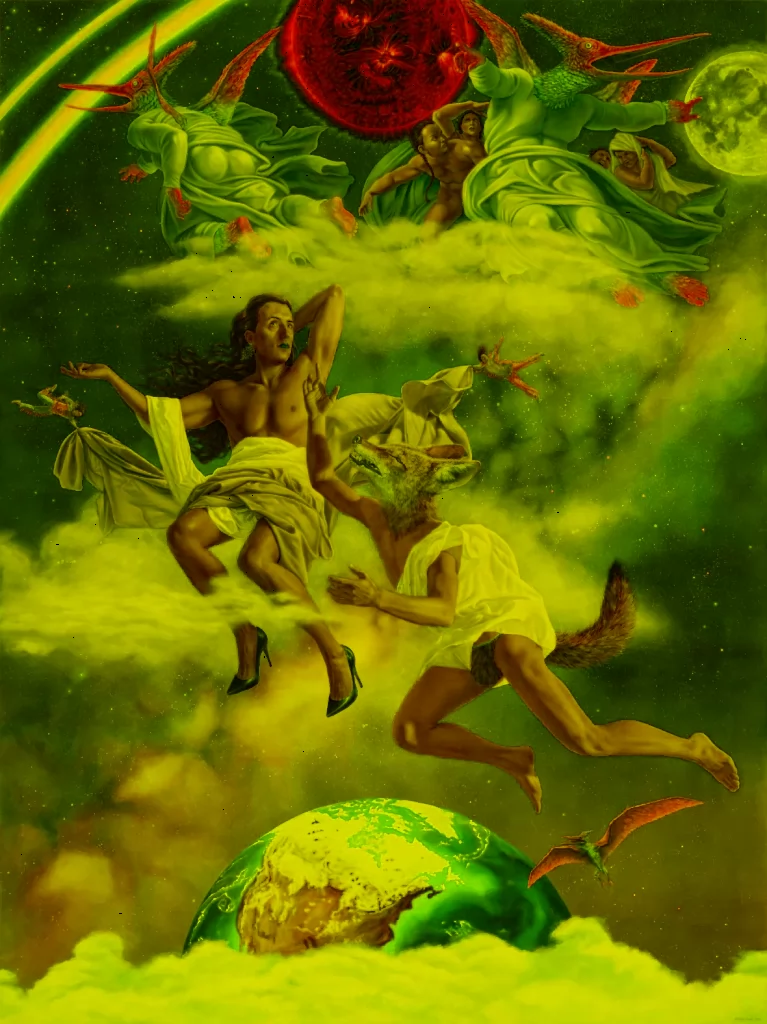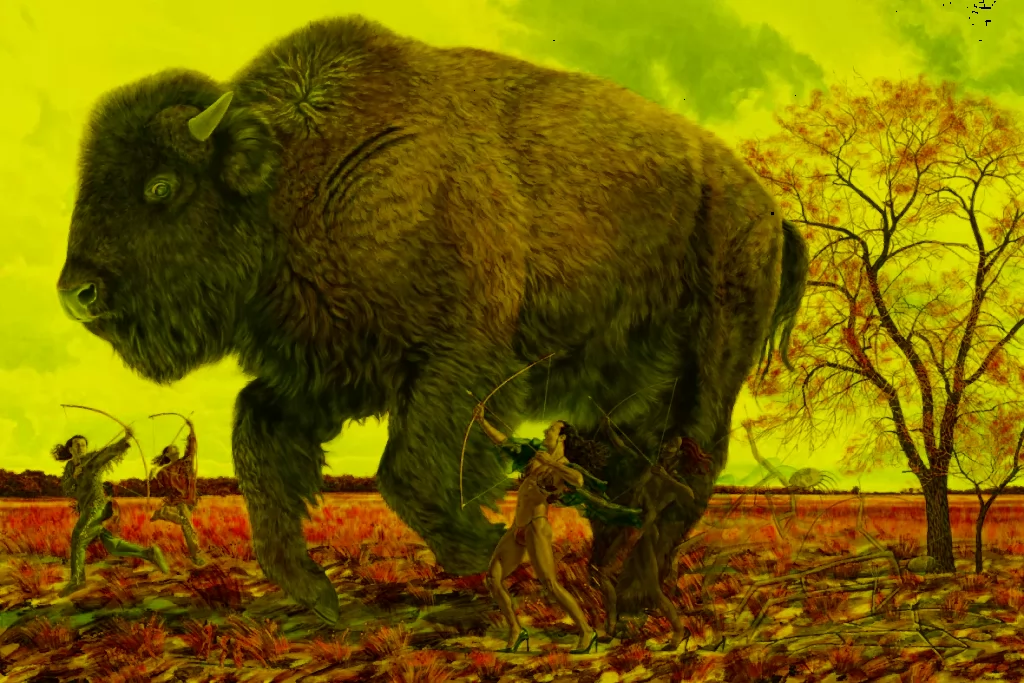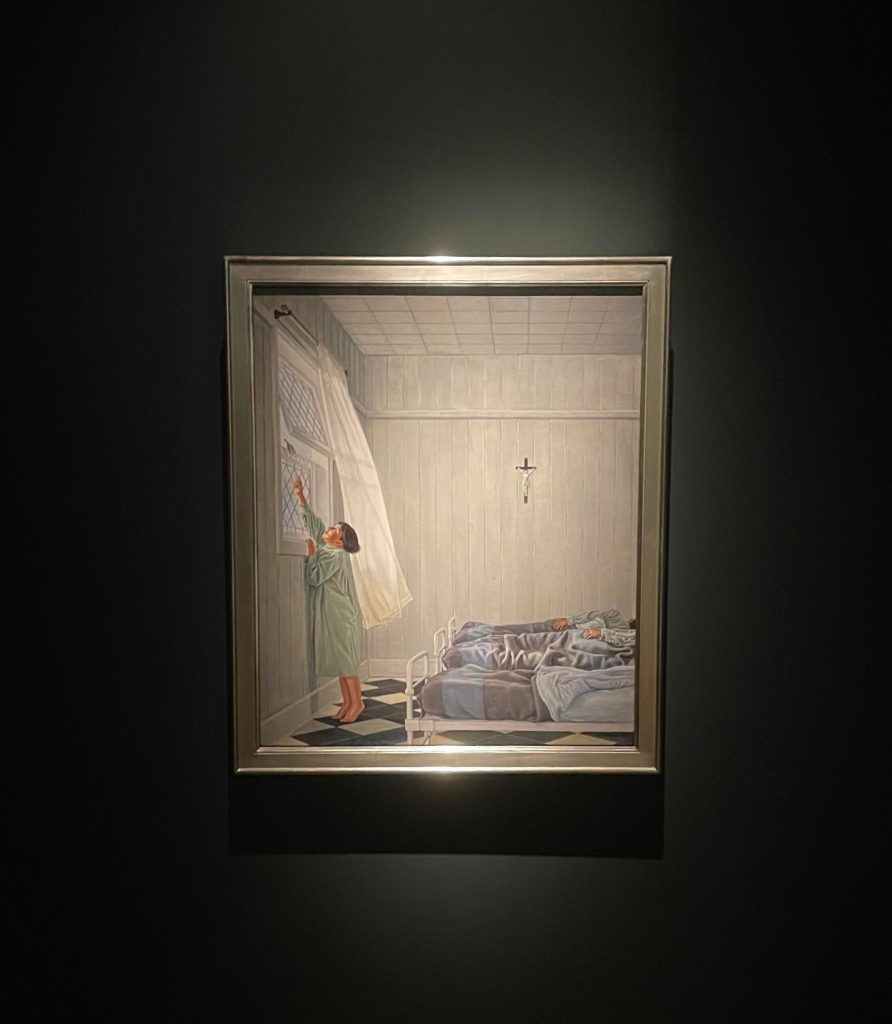Miss Chief Eagle Testickle takes us on a journey through time
Being Legendary is an installation of new original paintings by Cree artist Kent Monkman. Monkman is a member of Fisher River Cree Nation in Treaty 5 Territory (Manitoba). He is known for exploring the complexities of historic and contemporary Indigenous experiences in an interdisciplinary nature. The current exhibit, Being Legendary, is narrated by his gender-fluid alter-ego, Miss Chief Eagle Testickle—a time-travelling and shape-shifting being. Monkman is a well-renowned artist, and his works have been exhibited in many institutions, including The Metropolitan Museum of Art.
The installation is available to view at the Royal Ontario Museum until April 16 and is included with General Admission. The exhibit is a must-see, and admission is free for students on Tuesdays—just remember to bring your T-Card, and you’re set! On other days, student admission costs $18. Additionally, you can tour the exhibit with Indigenous Educators every Saturday and Sunday at 10:30am, 12:30pm, and 2:30pm.
Writer Gisèle Gordon assists Monkman’s experience with vivid narrations alongside each piece. Gordon notes that the intent of this exhibition is “to challenge the histories we’ve been told…and more broadly, amplify Indigenous knowledges and experiences that often go ignored in lands now known as Canada.” While walking through the exhibit and noticing the detail in every painting, alongside the narrative provided with each piece of art, I felt as though that intent had been achieved.
The beginning
The exhibit starts with an introduction—the beginning of time. Here, you will see Miss Chief Eagle Testickle explaining that she is a sacred being formed by the Creator. Miss Chief takes us on a journey through time and offers a narrative that reshapes how one might view the past, present, and future.

Moving through time
After the beginning, we are taken through a portrayal of life before human existence. This is coupled with the connection between the living and the extinct, allowing the viewer to note the appreciation for all no longer physically with us. We see an illustration of the significant role that everything plays in the histories and current realities of human beings. One will easily foster their own perspective of these artworks, but seeing the fossils alongside some pieces offers a new perspective—one that plays out as you move through the exhibit.
A quote in the installation that I particularly liked is “Quantum physics is only now catching up to what our Elders have long understood.” It draws an interesting perspective that one might not have thought of prior to walking through this exhibit. There is a notion that everything comes from the land, and it is important to appreciate the land as something that connects each of us as one. The exhibit portrays many lessons, songs, and stories that existed prior to European contact
.One of my favourite pieces is the Constellation of Knowledge. It brings together generations in an unearthly atmosphere—depicting the idea that we work together alongside the knowledge of everything. Looking at this piece, you can pick out certain aspects, and it almost feels like a puzzle that you want to make sense of. It invokes curiosity in a captivating manner, which really allows the viewer to jump into a deeper understanding of Indigenous knowledge.

The tragedies
The exhibit displays the tragic realities of what life became when the process of colonization began. One painting, Study for The Sparrow, drags the viewer away from the present into a dark and heart-wrenching frame of mind. There are moments in this exhibit that might make you feel uncomfortable, but it shifts your mind to the realities that Indigenous peoples faced upon colonization. It is important to understand that these events happened and have lasting effects that we cannot simply forget. However, Monkman’s exhibit demonstrates that these histories do not have to define us.

The future is now
The exhibit ends by giving the viewer an understanding of what has been lost since the beginning of time and an appreciation of the fact that we continue to uncover and reconcile as each day passes. “Our strength is in our languages, our people, and our kinship to all that is living.” Ending the exhibit with our future ancestors brings a sense of peace and joy to the viewer’s eye. It brings feelings of inspiration and hope—to know that Indigenous peoples are reclaiming the love that the Creator gave to each of us.





